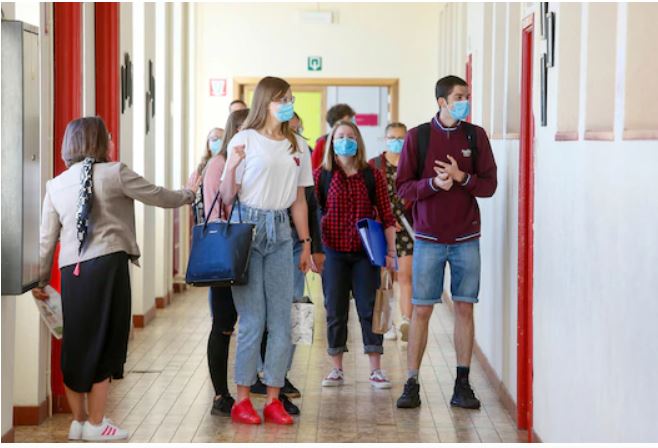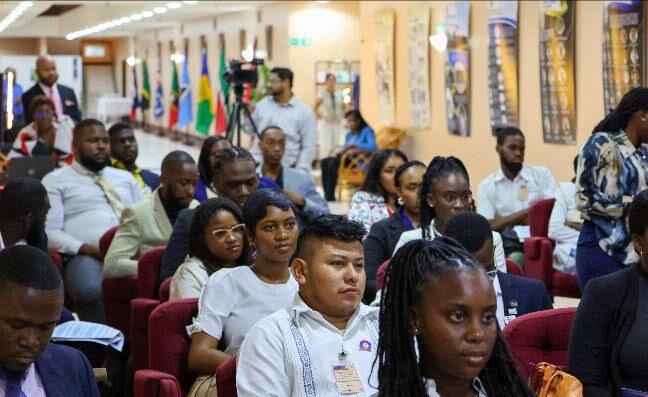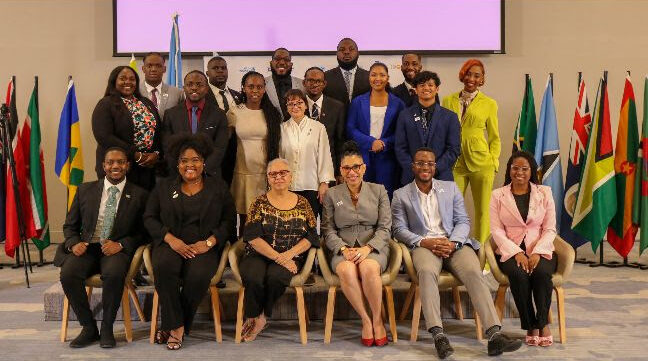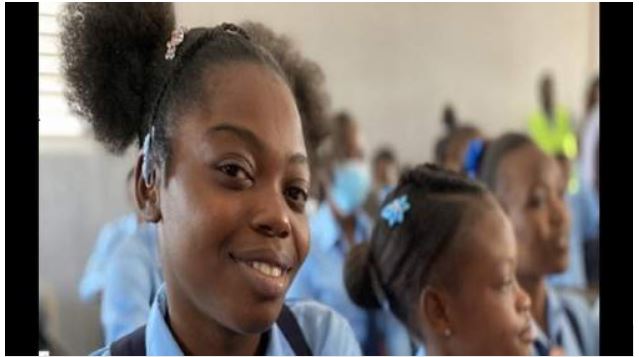Recent public health warnings about a severe and puzzling inflammatory syndrome linked to COVID-19 have focused on children. But some doctors say they are also seeing the illness, similar to Kawasaki disease, in a few young adults.
A 20-year-old is being treated at Rady Children’s Hospital in San Diego; a 25-year-old has been diagnosed at Northwell Health’s Long Island Jewish Medical Center; and several patients in their early 20s are hospitalized with the syndrome at NYU Langone in New York City.
Jennifer Lighter, a pediatric infectious diseases doctor at NYU Langone, said younger children with the condition seem to have symptoms that look more like traditional Kawasaki, which is characterized by inflammation of the blood vessels. But teens and young adults have more of an “overwhelming” response involving the heart and multiple organs.
“The older ones have had a more severe course,” Lighter said.
Physician Jane Burns, who runs the Kawasaki disease research center at UC San Diego, worries the condition may be underdiagnosed in adults.
The challenge, she said, is that many doctors who treat adults have “never seen Kawasaki disease before because that’s a disease of children.” Moreover, it’s trickier to get a quick look at adults’ hearts, because their chest walls are so thick and ultrasounds may be more difficult to interpret.
Burns and her colleagues are setting up a way for Rady Children’s specialists to able to screen adults suspected of the illness, and are talking with public health officials about expanding warnings about the condition to include young adults.
What “internists need to be aware of is that maybe this is coming their way,” she said.
The presentation of the new illness is very different from what doctors saw in children with COVID-19 who showed up at emergency rooms during the first wave of sickness in March and April. Back then, many pediatric patients had preexisting conditions, active coronavirus infections and trouble breathing. Those coming in now are mostly previously healthy children and young adults who suddenly develop fever, abdominal pain and/or nausea and vomiting and rashes that can be signs of more serious problems.
Many of the patients have antibodies to the novel coronavirus — suggesting they may have been infected weeks earlier and the condition may be a delayed immune response.
While the overall number of COVID-19 patients has dropped off sharply in New York City and other early hot spots, the number of children and young adults with the inflammatory condition continues to mount. As of this week, more than 20 states have reported cases with the total number estimated to be several hundred. New York City has reported 147 children with the condition. On Wednesday, Children’s National Hospital in the District announced it had 23 cases.
The syndrome appears to be rare, but the Centers for Disease Control and Prevention — which recently dubbed the condition MIS-C or multisystem inflammatory syndrome in children — has expressed alarm about the rapid decline of patients with the illness. The health agency, as well as major medical groups, have urged parents to seek an urgent evaluation if they suspect the condition.
At least four children, three in New York State and a 15-year-old girl in Maryland, have died of apparent MIS-C in recent weeks.
Doctors note the distinction between a child and an adult is a legal one, rather than a biological one. In the United States, 18th birthdays are often marked as a milestone in people’s lives — the moment when they gain privileges such as the right to vote, buy a house or get married in most states. But changes in the human body occur more on a continuum, with certain stages of life, such as puberty, involving more rapid changes than others.
People in their 20s are at their physiological peak in terms of their lung capacity, reproductive system and strength. So in this way, young adults may be more similar to children than to people in their 30s — some of whom may be starting to experience the slow, gradual declines of aging.
Many other viruses — chickenpox and measles are classic examples — appear very differently in children than adults, and it’s unknown exactly why.
The cause of Kawasaki has long been a mystery, and the same is true of the inflammatory syndrome linked to COVID-19. But doctors say they suspect some people are born with a genetic predisposition for an overactive immune response to Sars CoV-2 that triggers a Kawasaki-like syndrome.
The New York State Health Department is conducting genetic tests of patients’ DNA to figure out whether there is a common link among the children who have the condition.
Lighter said that in the context of estimates that about a third of New York City residents have been exposed to the novel coronavirus — a rough ballpark some doctors have used as a way of estimating the incidence of various COVID-19 presentations — the 147 children reported sick is very small.
On an individual level, that’s good news, she said. But since most of the country has not been exposed yet, even that tiny percentage could end up translating into a significant number of cases of the inflammation syndrome.
“When you have a new pathogen infecting a large population, you are seeing more blips,” Lighter said.
James Schneider, a pediatric critical care doctor at Northwell Health, emphasized this illness is not something that can be treated at home. Patients with the syndrome have needed blood pressure medications, steroids, anticoagulants, immunoglobulin and sometimes ventilators to get better. A few have gone into cardiac arrest and had to be revived through CPR or cardiopulmonary resuscitation.
Of the 44 children with MIS-C treated at Northwell, about 80 percent have recovered and have been discharged to home, he said.
“Thankfully we have not had any mortalities in our institution. I sure hope to keep it that way,” Schneider said.




